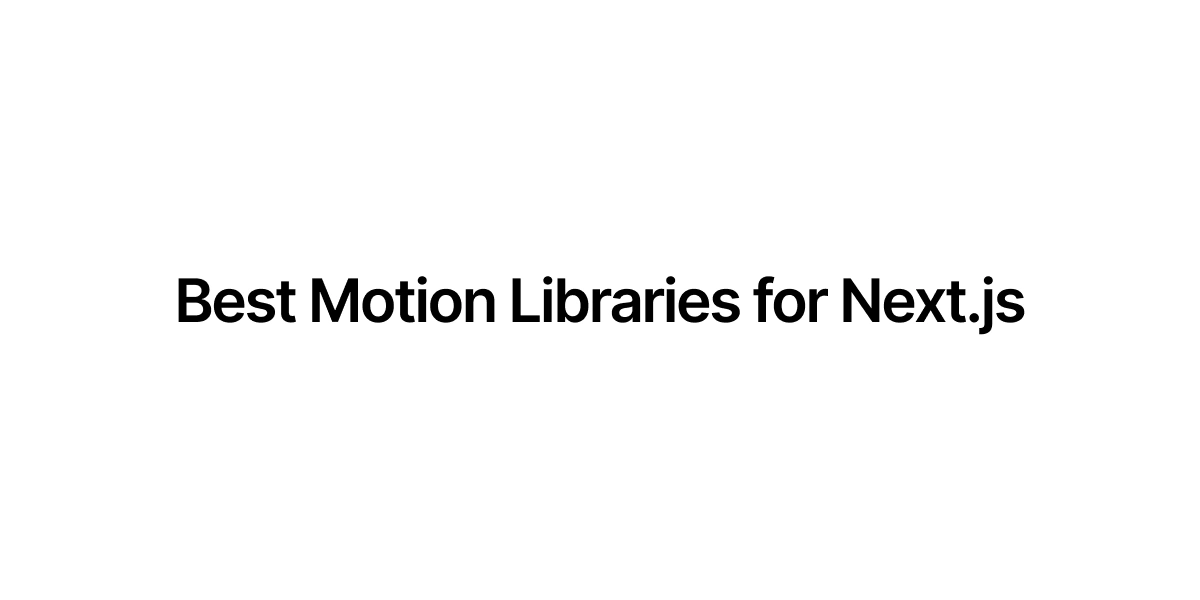Best Motion Libraries for Next.js
A list of best motion libraries for Next.js which you can use to build your next micro SaaS.

Animations can make all the difference in turning visitors into engaged users. If you’re working with Next.js and want to step up your motion game, let’s discuss three libraries that are worth your attention.
Don’t forget, there’s no wrong choice here - each library has its strengths. Pick the one that matches your current skills and project needs, and you can always switch later as you grow.
Framer Motion
Framer Motion is probably your best first pick for Next.js. It’s made for React, so integrating it feels natural and quick. Even animations feel really easy—just a motion component and a few tweaks, and you’ll have smooth transitions. Plus, it supports Server Components, so you won’t run into any hydration issues.
Motion.dev
Motion.dev is very useful when performance is your top priority. It’s built on the Web Animations API, which means you get really smooth animations without the extra JavaScript overhead. The best part is you can design complex animations easily, without getting stuck in callback hell. It’s perfect when you need more control over animation timing and want to keep your bundle size small.
GSAP
While GSAP isn’t React-specific, it works surprisingly well with Next.js when properly set up. It is mainly used when you need more complex animations. It provides you the most control over your animations and is mainly preferred when you need to go beyond basic transitions. It does require a bit more setup in Next.js, but the payoff is surely worth it.
Conclusion
Just take a small step forward - choose a library you like and try building something simple. Experimenting like this is what will help you determine what works best for your project.
For Deployments, I recommened using Zerops as it is the cheapest and easiest way to deploy your Next.js app.
But you can also use Vercel or Netlify.
And if you’re looking for more saas boilerplates, check out our boilerplates page.
